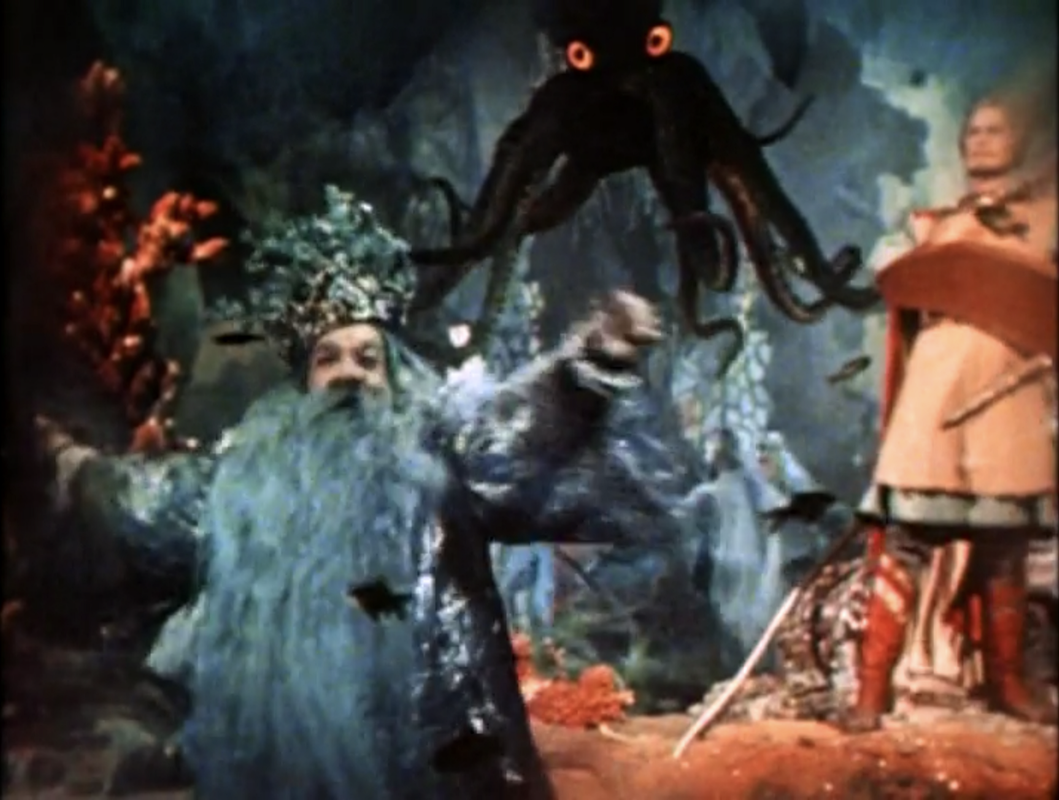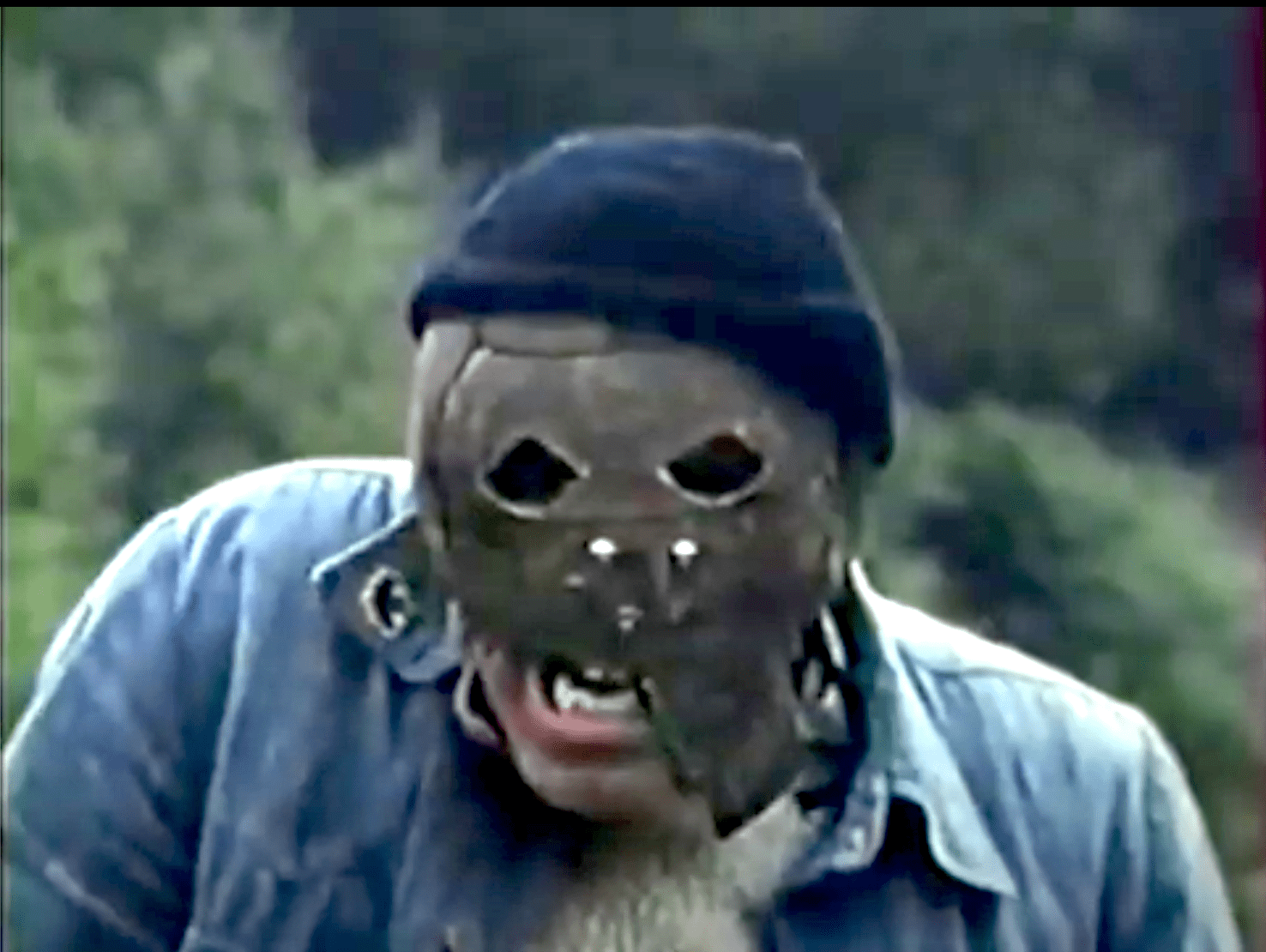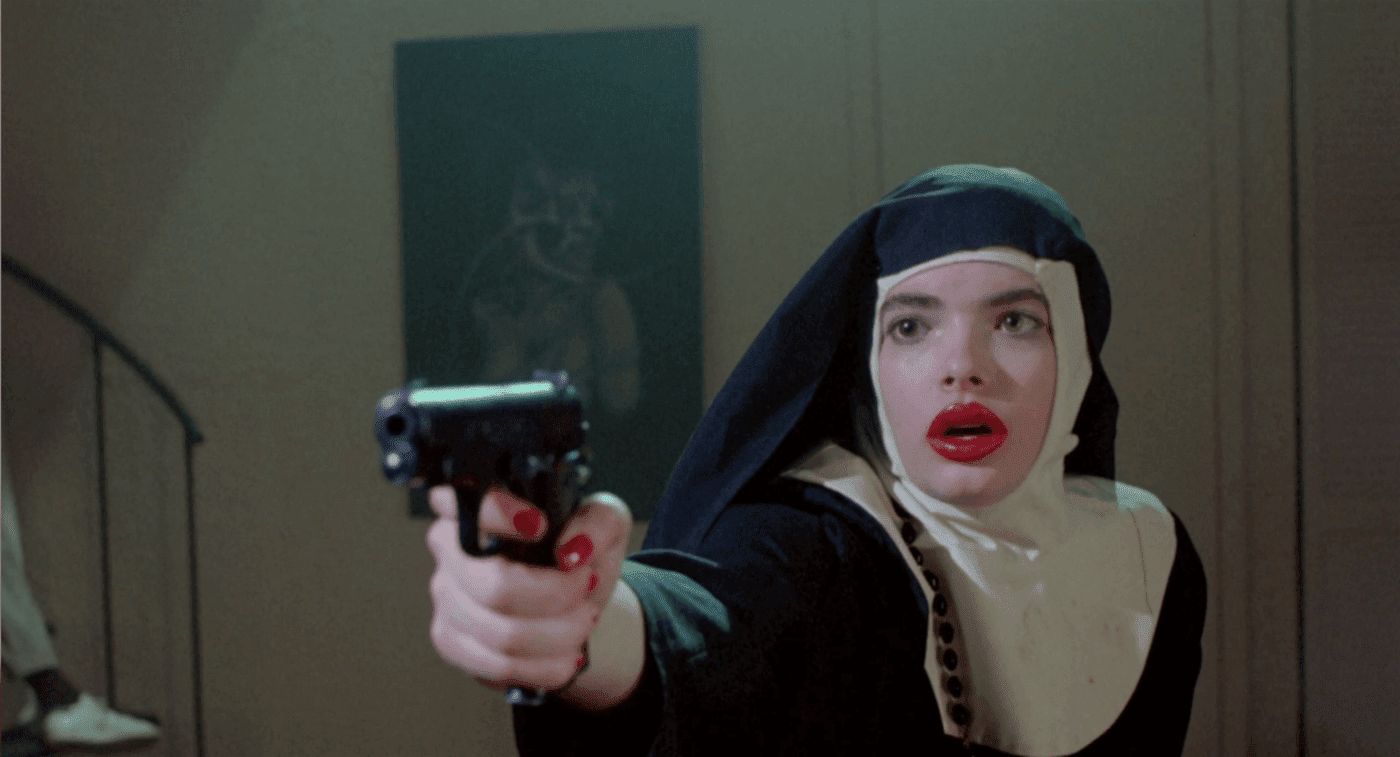
The first half of Anguish is excellent. It’s a fast-paced, disorienting, psychedelic, and stomach-churning horror film with some wonderfully clever conceits. Like Michael Powell’s Peeping Tom, Bigas Luna‘s Anguish has a lot to say about voyeurism, objectification, violence, and the medium of film in general.
Anguish was made in 1987, a time when the art world was working through post-modernism. In line with post-modern ideas, Anguish presents material as a series of references or as inside quotation marks to offset the material’s direct meaning and suspend it as a signifier. A prime example of this would be released a few years later in Wes Craven’s Scream. Both films acknowledge their audiences by partially dismantling the fourth wall. The films invite us to consciously take note of the tropes and cliches they use thereby drawing us out of the direct investment in the narrative and into a more removed consideration of the whole film and the dynamics of the medium.
Part of this post-modern practice is paying close attention to the points of view that the camera adopts. In Anguish we the audience are often watching an audience watch a film in which there is an audience watching a film. There is even a third layer so that we are watching a film within a film, within a film, within a film. Each of these layers has a cast of viewers and a cast of people being viewed. The movie engages all of these points of view and allows us to inhabit a variety of vantage points.
Luna creates a disorienting play between all these POVs by playing tricks with the editing. When the movie cuts from what is on the screen to the audience it often jumps layers. We see movie A but when the camera turns to the audience we see audience B.
This structure in and of itself is entertaining but Anguish also includes a compelling story that references Alfred Hitchcock’s Psycho, and John Frankenheimer’s The Manchurian Candidate. Anguish is a drama about a man who is hypnotically controlled by his murderously jealous mother. The mother is played by the incomparable Zelda Rubinstein who had recently chilled audiences with her portrayal of Tangina the psychic medium in Tobe Hooper’s Poltergeist.

Together they murder people and collect their eyes. The focus on eyes is of course a deliberate reference to both voyeurism and objectification. In a deranged way removing someone’s eyes is a kind of objectification where you take away their power to “gaze” and turn the tool of their gaze” into an inanimate, impotent object.
The points of view get really interesting when we witness several hypnosis sessions between mother and son. We the audience are put in both hypnotizer and hypnotizee’s seats. We watch and wonder whether the audience in the film is getting hypnotized and will be used in some evil scheme, but as they stare at the psychedelic swirls and hyper close-up images of the mother’s eyes and mouth we realize that if the audience is getting hypnotized then we too could be undergoing the same process.

There is a wonderful multiplicity of layers that are unceasingly trading places. Throughout the film, there are shots of scared audience members cautiously turning their heads to look behind them. We’ve all done it. It’s a classic case of our primitive emotional mind (the limbic system) being stronger than our rational mind (the cortex). We know better but have to check. This dynamic is why we create and listen to stories in the first place. We are able to invest ourselves in fictions. We suspend our disbelief and let the boundaries of reality blur.
In Anguish, there are two of the layers where there are actually murder is in the audience, so when the audience members think they are simply succumbing to unfounded fear by foolishly turning their heads, we know that they are actually in genuine danger, although it can be hard to keep track of which audience contains a murderer and which audience doesn’t.

Another device that blurs the boundaries is the overlapping of sound. We see one movie but it is sometimes difficult to establish if the dialogue we hear is coming from the soundtrack or the audience.
There are two times that the film shows an image of Man Rey’s Object to Be Destroyed. Man Rey was interested in the creative process and thought that the key to making art was being able to shift directions. I can’t find the quote but he once said something to the effect of “You take an object, do something to it, and then do something else to it.” The statement seems simple but it is insightful. Creativity is the ability to change directions or rethink what you are doing.

Bigas Luna might have benefited from Man Rey’s advice. Luna sets a whole series of interesting balls in motion and then just keeps juggling them in a circle until it gets boring. What begins as a bloody, confusing melange of ideas ends up just coasting until it loses momentum and peters out. Eventually, all the jumbled realities synch up and what we are left with are coordinated copies of the same reality unfolding in each of the layers. It’s the least interesting way to resolve a full and rich mixture of possibilities. The film just collapses down the ambiguities and play between elements and comes to a halt.
Endings can be as challenging as beginnings or premises. If an ending is simply a tying up of loose ends or an affirmation of the hero’s goal it can potentially cast the entire film as a cliche. Endings have the potential to completely reframe a film or narrative changing completely how it is viewed. Anguish falls nowhere on this continuum. It neither brings closure nor opens a door to some new consideration, it just ends.

If you enjoyed this article click here for more
https://filmofileshideout.com/archives/assignment-terror



